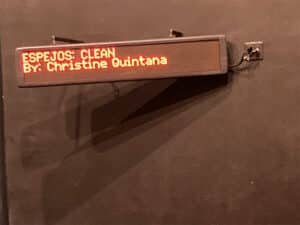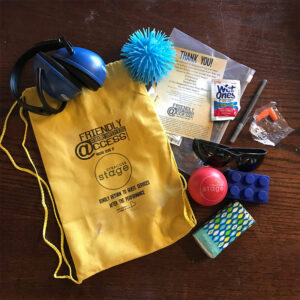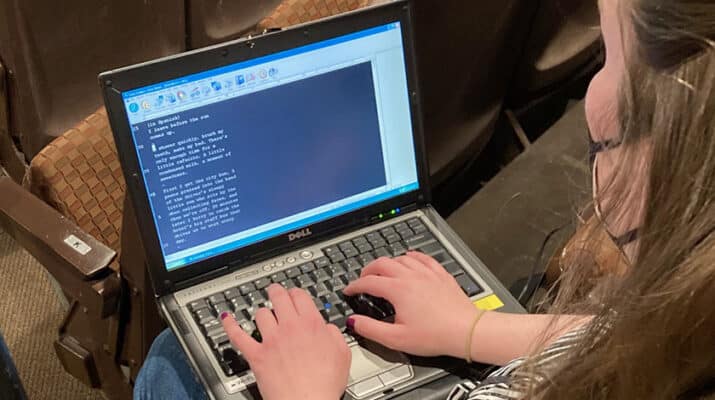Initiative to allow more access to those with poor vision or are deaf or hard of hearing
Mary Beth Roach

Arecent $12,000 grant from the Central New York Community Foundation to Syracuse Stage will allow the arts organization to expand the accessibility performances services it provides its patrons.
“This grant gives us the opportunity to purchase and provide more tools to serve more people across the season,” according to Bob Hupp, Syracuse Stage’s artistic director.
The monies allow for Syracuse Stage to offer more sensory-friendly kits for those with autism; enhance programming for those who have poor vision, or are deaf or hard of hearing; and consultations with experts in respective fields.
For the CNY Community Foundation, the grant enables the organization to partner with Syracuse Stage to bring “inclusive arts programming to the community,” said Danielle Johnson, senior director for grants and programs for the CNYCF. “Arts is something the entire community should be able to enjoy.”
She acknowledged, too, that none of the grants they award would be possible without the foundation’s donors.
Since many of the materials provided to the public for these special programs — such as the headsets — are technological, funding, such as that from the CNYCF, allows Syracuse Stage to keep up with current advancements. The stage staff continue to research and understand these advances “that allow us to provide services in the most effective and efficient ways as possible,” Hupp noted.
Syracuse Stage offers a wide range of accessibility provisions for its plays. Kate Laissle, associate director of education, explained some of the tools they utilize. Certain performances have special features to provide the optimum theater-going experience for those with hearing or visual challenges.
For those who are blind or have poor vision, there is an audio description program, in which patrons wear headsets and listen as someone with Syracuse Stage describes scenic and costume designs along with action on the stage throughout each performance. This is offered usually the third Saturday matinee of each performance.
There is also open captioning, with dialogue, as they are spoken in real time, appearing on an electronic board on the right-hand side of the theater. A staff member inputs the dialogue during each performance, incorporating any script changes.
In addition, there are ASL performances and assisted listening devices available.
The theater’s schedule on its website, syracusestage.org/accessibility, www.syracusestage.org/accessibility has information when these special performances are offered.

Its first sensory-friendly performance was introduced in its 2016-17 season with Mary Poppins, making it the first theater in the area to do so.
The motivation to offer these types of shows came out of “really wanting to live what we said we were doing,” Hupp said, adding that the holiday shows had been promoted as family programs, but they realized that not all families were able to enjoy the productions.
“We were recognizing it wasn’t friendly to every family,” Hupp said.
There was some movement across the country to adapt shows to be more accessible, he explained, so they worked with national and local experts.
The shows were popular right from the start —so much so, that the 2022-23 season will mark the first time that Syracuse Stage is offering not just one sensory-friendly show, but three.
The last one for this season will be “Clue” in June, which is based on the popular board game. The schedule on the Syracuse Stage website will list when the sensory-friendly performance is.
These sensory-friendly shows are especially for those with autism, ADD, ADHD, dementia or other sensory sensitivities. Staff work with parents of children with autism, individuals with autism and medical professionals to get their perspectives and make necessary adjustments based on their recommendations.
Each family receives a safety kit, including fidget toys and other materials. Lights and sound are adjusted accordingly, and the audiences are allowed to wander around. Laissle calls it a “shush-free environment.”
In addition, tables have been set up in the lobby areas for those that may need to take a break from the show; and there is a calming room that offers more of a respite for patrons if needed.
As Syracuse Stage expands its sensory-friendly activities from one play to three, the staff will continue to evaluate its sustainability, he added.
“Our hope is to continue to draw the best recommendations, the best learnings across the country to serve audiences in Central New York, and to make sure that we are as inviting as we can be to as many people as possible,” Hupp said.
Top image: Cynthia Reid, executive assistant at the Syracuse Stage, shows how they do the open captioning at the facility.

